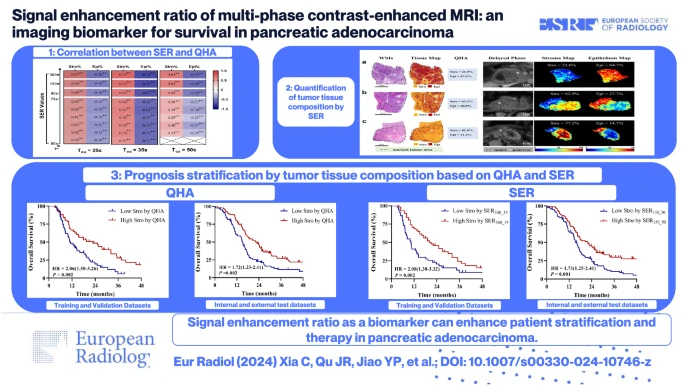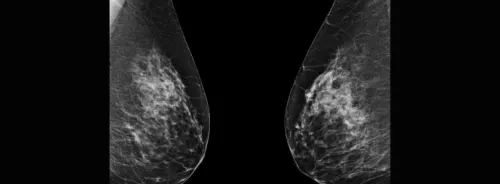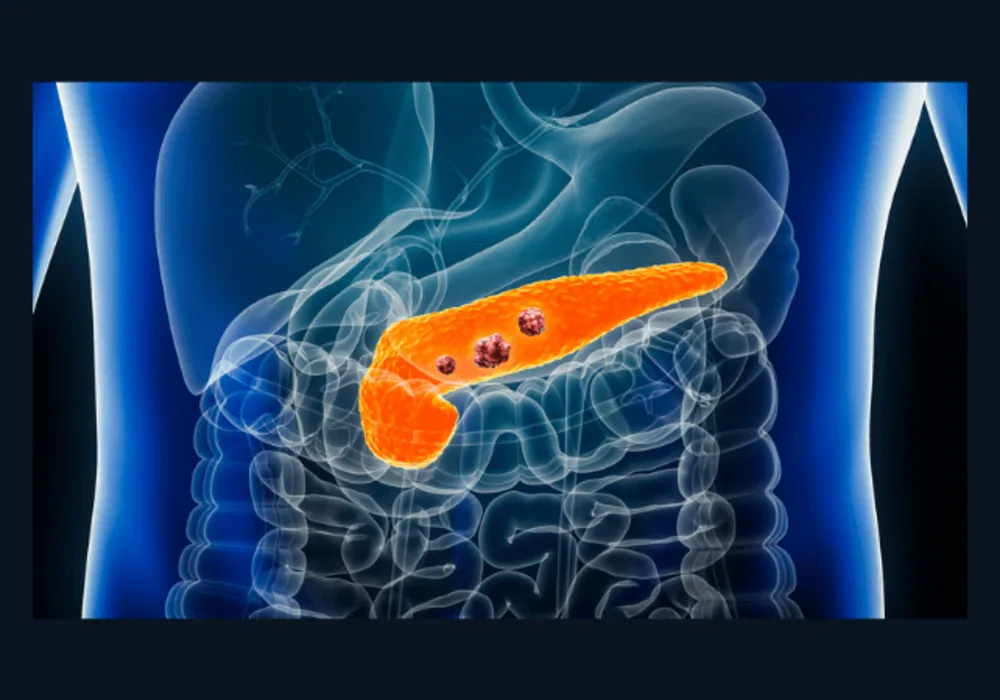Pancreatic adenocarcinoma (PDAC) is a deadly cancer due to its aggressive nature and limited treatment options. Its dense stroma poses challenges for drug delivery, impacting prognosis. While current imaging techniques focus on shape and volume descriptors, there's a need for better imaging biomarkers to understand tumour composition. Multi-phase dynamic contrast-enhanced MRI (DCE-MRI) shows promise, but technical hurdles remain. Signal enhancement ratio (SER), a semi-quantitative method, has shown potential in other cancers but hasn't been extensively studied in PDAC. Recent advancements in digital pathology offer new tools for PDAC detection and tumour-stroma segmentation. However, the relationship between SER and tumour composition in PDAC hasn't been explored. This recent study published in European Radiology aims to assess SER derived from DCE-MRI in characterising PDAC tissue composition, using quantitative histopathological analysis as a reference. Additionally, the prognostic value of SER will be investigated.
A Comprehensive Multicentre Study to Address the Challenges in Pancreatic Adenocarcinoma
The study involved PDAC patients who underwent surgery and preoperative multi-phase CE-MRI at three Chinese academic centres between 2015 and 2021. Patients were divided into internal training, validation, and test datasets, and two external test datasets were included. Inclusion criteria were upfront surgery with histopathological confirmation of PDAC, preoperative CE-MRI, and available H&E-stained WSIs. Exclusion criteria included inadequate MRI quality, missing WSIs, and lack of clinical data.

Image Credit: European Radiology
A total of 277 PDAC patients were included in the study. SER was calculated from MRI images, and deep-learning algorithms were used to quantify tumour components on WSIs. Correlation, regression, and Bland-Altman analyses were conducted to explore associations between SER and QHA. The prognostic significance of SER for overall survival was assessed using Cox regression analysis and Kaplan–Meier curves.
Correlation of Signal Enhancement Ratio and Tissue Composition in PDAC
The study revealed significant correlations between SER and QHA-measured stroma/epithelium in PDAC, indicating that SER could be a reliable surrogate for quantifying tissue composition. Notably, SER demonstrated high interobserver reproducibility and consistency across the three different academic centres, enhancing its potential as a generalisable imaging biomarker. Furthermore, lower SER-predicted stromal proportion was independently associated with worse overall survival (OS) in both the training and validation datasets. This prognostic significance of SER persisted across the combined test datasets from the three centres, highlighting its potential for prognostic stratification in PDAC.
Optimal Time Points and Implications for Imaging Biomarkers
The study also investigated the optimal time points for SER using a 16-phase DCE-MRI protocol, revealing specific post-injection time points that yielded optimal tissue characterisation. These findings were consistent with previous studies indicating a gradual enhancement pattern and maximum contrast at certain time points for detecting PDAC. The correlation between SER and QHA may be attributed to differences in tissue contrast agent concentrations, with the stroma impacting the distribution of contrast agents. Despite limitations such as the retrospective design, small sample sizes, and lack of spatial registration between WSIs and MRI data, SER-predicted stromal proportion remained an independent predictor of survival.
Overall, the study findings suggest that SER of multi-phase CE-MRI is a potential imaging biomarker for tissue composition characterisation and prognosis stratification in PDAC. Future research endeavours should address the study's limitations and further validate SER's utility in prospective multicenter cohorts.
Source: European Radiology
Image Credit: iStock






